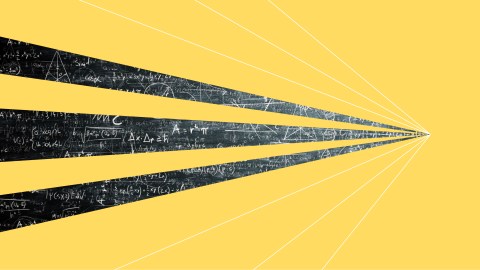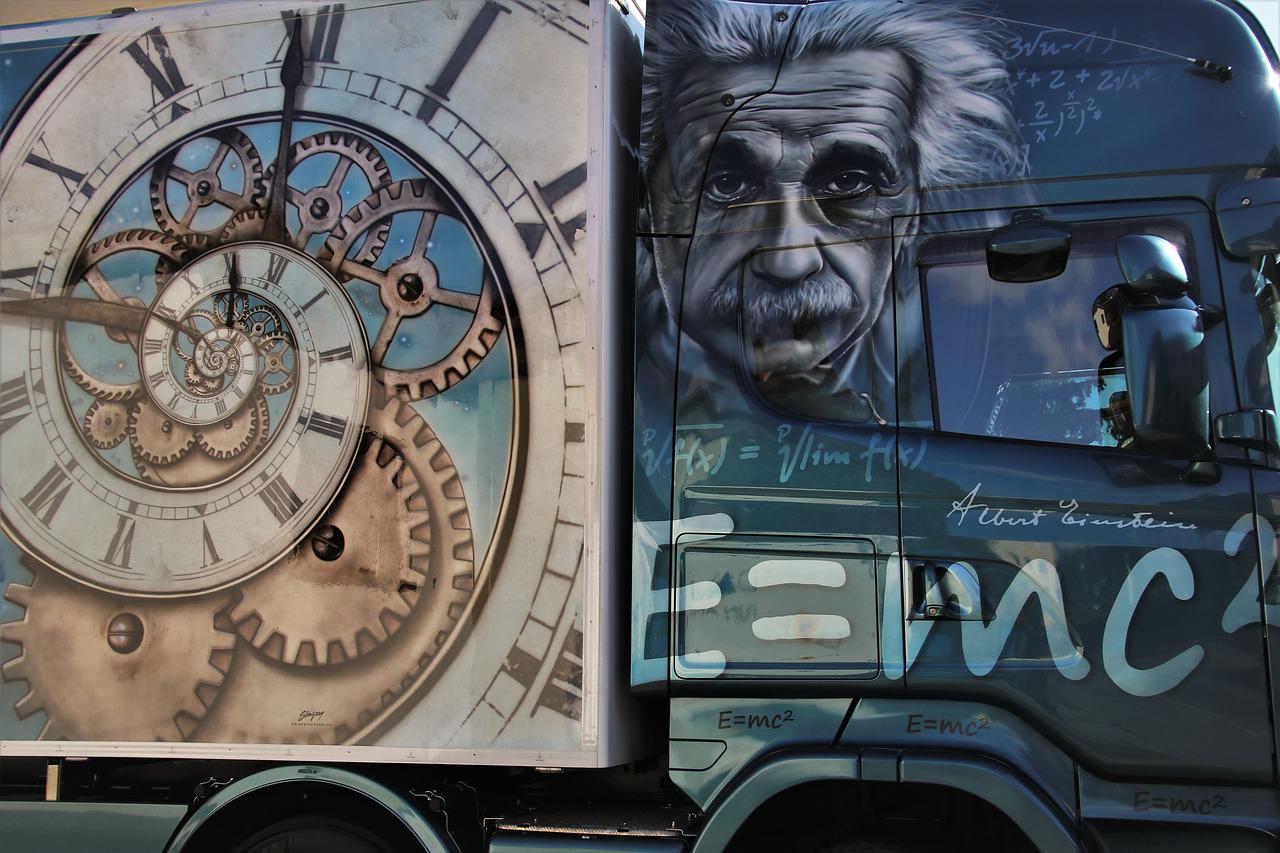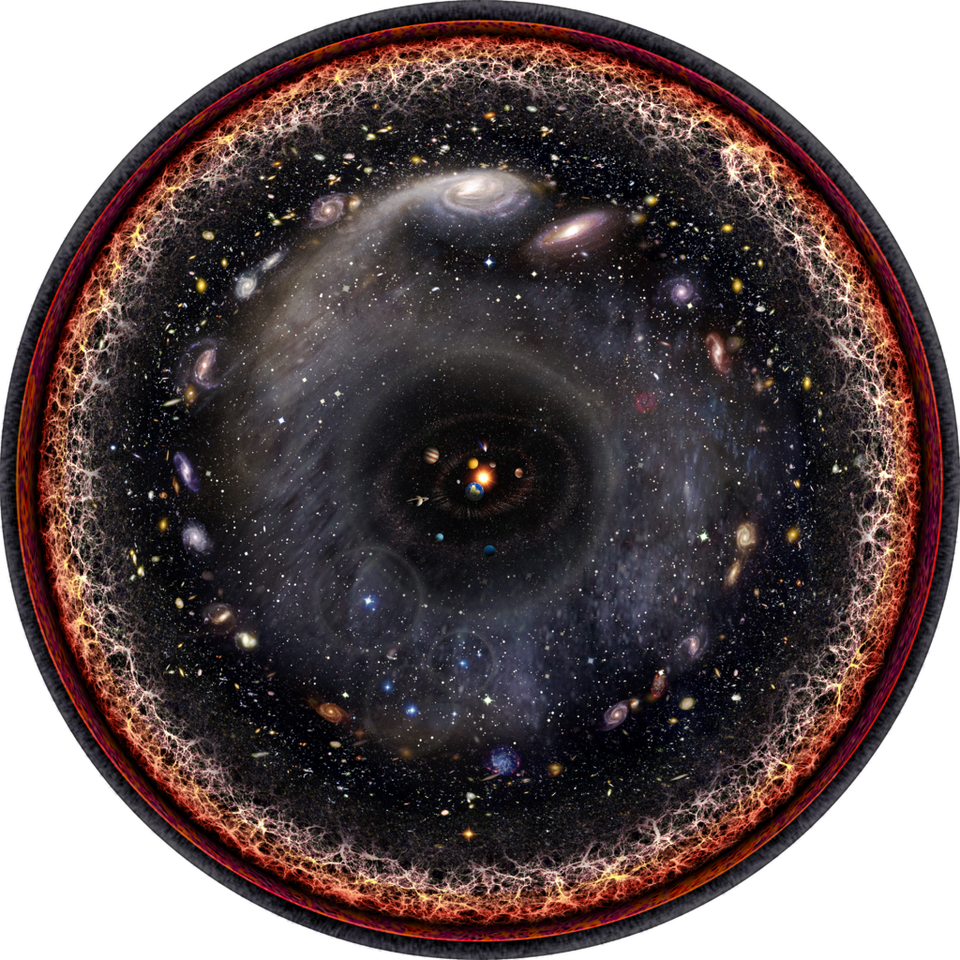At light speed, Einstein’s equations break down and nothing makes sense

- The relationship of light to time is nonintuitive.
- Mathematical limits allow us to figure out what happens to photons at the exact speed of light where Einstein’s equations break down.
- At the speed of light, clocks stop — and the Universe is shrunk to zero size.
Einstein’s theory of special relativity predicts some crazy phenomena, none more nonintuitive than the idea that moving clocks tick more slowly than stationary ones. As clocks approach the speed of light, they tick ever more slowly, getting closer and closer to not ticking at all.
So, this raises an interesting question: Since fast-moving objects experience time more slowly and the speed of light is the ultimate speed limit, does light “experience” time? On online physics chat forums, many answers are given. But what is the truth?
On the face of it, the idea that light doesn’t experience time seems kind of silly. After all, we see light pass from the Sun to the Earth. We can even time how long it takes. (About eight minutes.) So, it seems rather obvious that light experiences time. But that’s the time we experience. What does light experience?
Answering this question is a bit tricky. Physics is an experimental science, and the definitive way to answer questions is to do experiments. We could design an experiment in which a clock is attached to a photon. The only problem with that idea is that it is completely impossible. After all, only objects without mass (like photons of light) can travel at the speed of light, and objects with mass must travel slower. Clocks most certainly have mass, so no clock can travel alongside light to allow us to do the experiment.
The power of limits
As we are forbidden from doing the definitive experiment, we must turn to theoretical considerations. What do Einstein’s equations tell us?
Here, the story gets a little more complicated. Einstein’s time-related equations apply for objects traveling with zero speed up to, but not including, the speed of light. At the exact speed of light, they break down. Thus, those equations don’t apply for light itself — only for objects traveling slower than light.
If we can’t do an experiment and our equations don’t apply for the speed of light, are we stuck? Well, to a degree, yes. On the other hand, while Einstein’s equations don’t apply for 100% the speed of light, there is nothing stopping us from asking the same question for objects traveling at 99.999999% the speed of light. And if you want to toss some more 9’s in there, go ahead; the equations work just fine.
So, let’s use the approach of limits, often used in calculus class. If you can’t solve a problem exactly for a specific value of some parameter, you can use other values of that parameter and ask what happens as you get closer to the value you want. Very often, the trend you see tells you what will happen when you get to the forbidden value.
We can use that approach here. What happens if you take an object with mass and move it faster and faster? How does that object experience time?
Approaching the speed of light
Here, we are on much firmer footing. Scientists have been doing this experiment for decades. We can take subatomic particles and accelerate them to very high speeds — speeds very near the speed of light. Furthermore, these particles have their own clock. We can use these tiny clocks to examine what happens as we get them to go faster and faster.
How does this work? As an example, let’s consider a subatomic particle called a pion. Pions are kind of like low-mass protons. They also are unstable, decaying in 28 × 10-9 seconds. This lifetime has been measured to incredible precision. If you had a pion and hypothetically accelerated it to the speed of light, which is roughly 300,000 km/sec (186,000 mi/sec), it should travel just over 8 meters (27 feet) before it decayed. But that’s in a Universe in which all clocks tick equally — that is, a stationary human clock and a moving “pion clock” tick at the same rate. They don’t, though.
When scientists create pions traveling at 99.99% the speed of light, they find that they travel about 600 meters (1920 ft) before decaying. That can only happen if fast-moving pions experience time more slowly than stationary ones.
By the way, 99.99% the speed of light is not the record for particle accelerators. Scientists can accelerate subatomic particles to much higher speeds. The record was achieved in a particle accelerator located in Europe at which electrons were accelerated to the jaw-dropping velocity of 99.9999999987% the speed of light. In that incredible environment, Einstein’s equations still worked perfectly. At these speeds, a hypothetical clock accompanying the electrons would tick a little over 200,000 times slower than a clock near a stationary electron.
Given the effectiveness of Einstein’s equations and the fact that the only limit to the speed of an electron is the speed of light, we can see that the closer we accelerate a clock to the speed of light, the slower it ticks. If it could achieve the speed of light, the clock would stop.
No time or space
So, what does that mean? From a photon’s perspective, it can pass through the entire Universe without experiencing time at all. Billions and billions of light-years can fly by, in far less than the blink of an eye.
There’s more. While the subject of this article is the passage of time experienced by a photon of light, the theory of relativity also tells us how space is experienced. As objects go faster, the Universe shrinks in the direction they are traveling. Using the same techniques described here, we can also see that for a photon, the Universe is shrunk to zero size. Billions of light-years disappear, meaning that, from the photon’s point of view, it simultaneously exists everywhere along its path of travel.
Relativity is certainly a nonintuitive theory, and it makes some very bizarre predictions. However, perhaps the most bizarre of all is that light experiences neither time nor space, existing in all places and all times at once. This crazy-sounding result reminds us that the laws that govern the Universe are weird and wonderful — and it gives us much to ponder.





